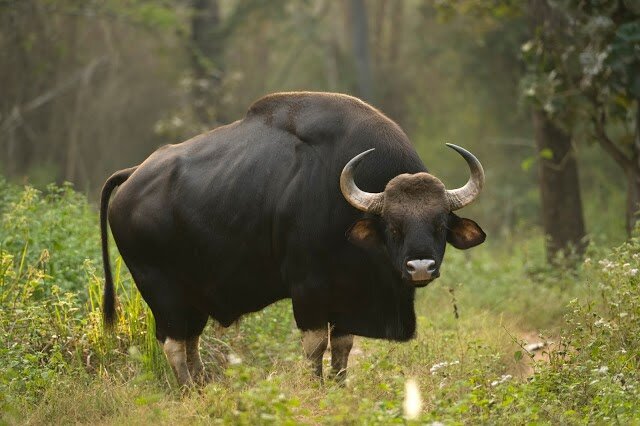Important Facts For Prelims
Indian Bison (Gaur)
- 17 Oct 2022
- 3 min read
Why in News?
Recently, Sri Lanka asked India to translocate 6 Indian Bisons to reintroduce them in the island from where they became extinct by the end of 17th century.
- If the project is cleared, it would be the first such agreement between India and Sri Lanka.
What are the Important Facts about Indian Bison?
- About:
- The Indian Bison or Gaur (Bos gaurus) is the tallest species of wild cattle found in India and largest extant bovine.
- There are about 13,000 to 30,000 gaurs in the world with approximately 85% of the population present in India.
- The first-ever population estimation exercise of the Indian gaur carried out in the Nilgiris Forest Division in February 2020 estimated around 2,000 Indian gaurs to be inhabiting the division.
- Geography:
- It is native to South and Southeast Asia.
- In India, they are very much prevalent in the Western Ghats.
- They are primarily found in Nagarhole National Park , Bandipur National Park, Masinagudi National Park and Biligirirangana Hills (BR Hills).
- It is also found in Burma and Thailand.
- Habitat:
- They prefer evergreen forests and moist deciduous forests.
- However, they can survive in dry deciduous forests also.
- They are not found in the Himalayas with an altitude greater than 6,000 ft.
- They generally stick to the foothills only.
- They prefer evergreen forests and moist deciduous forests.
- Food Habits:
- The Indian Bison is a grazing animal and generally feeds in the early morning and in the late evenings.
- Conservation Status:
- Vulnerable in IUCN Red List.
- Included in the Schedule I of the Wild Life Protection Act, 1972.
- Threats:
- Food Scarcity: Due to the destruction in the grasslands, planting of commercially important trees, invasive plant species and indiscriminate grazing of domestic animals
- Poaching: For their commercial value as well as due to the high demand of gaur meat.
- Habitat Loss: Due to deforestation and commercial plantations.
- Human-Animal Conflict: Due to living in proximity with human habitations.





